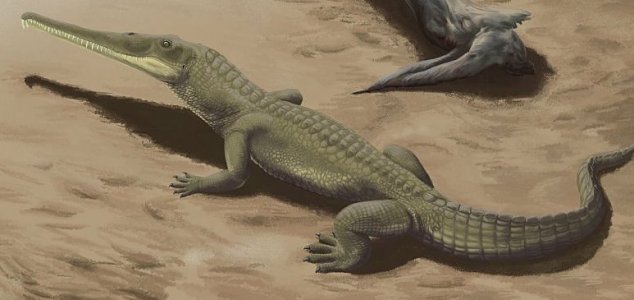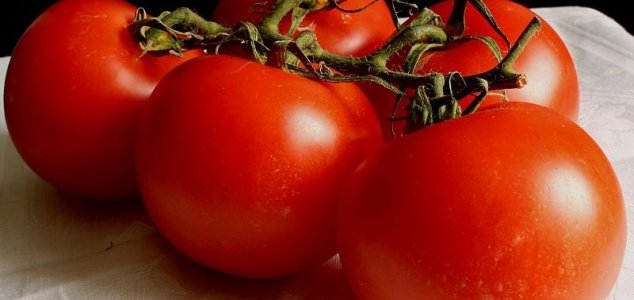 Scientists have been investigating the specific emotions that separate a nightmare from a bad dream.
Scientists have been investigating the specific emotions that separate a nightmare from a bad dream.
While most of us will remember waking up in the middle of the night after experiencing a particularly terrifying dream, researchers now believe that not all nightmares involve an element of fear. Instead, up to half of the unsettling dreams we experience may revolve around other emotions such as anger or sadness.
The team collected together more than 10,000 dream reports from 572 respondants and analyzed the emotional aspects of both nightmares (that wake the person up) and bad dreams (that generally do not cause the person to awaken.)
What they found was that nightmares tended to feature some form of physical threat such as being chased or falling from a great height, while bad dreams tended to revolve around some sort of psychological threat such as an interpersonal conflict or public embarrassment.
"Death, health concerns and threats are common themes in nightmares, but it would be wrong to think that they characterise all nightmares," said lead author Dr Geneviève Robert. "Sometimes, it is the feeling of a threat or an ominous atmosphere that causes the person to awaken. "
 The remains of a prehistoric crocodile-like creature have been discovered in the wilds of west Texas.
The remains of a prehistoric crocodile-like creature have been discovered in the wilds of west Texas.
It is thought that this particular specimen died in a lake over 205 million years ago, sinking to the bottom where its remains ended up being preserved thanks to the dirt and sediment. While only its head survived, palaeontologists were still able to identify it as a new species of phytosaur.
"A phytosaur resembles a crocodile," said Bill Mueller of the Museum of Texas Tech University. "They had basically the same lifestyle as the modern crocodile by living in and around the water, eating fish, and whatever animals came to the margins of the rivers and lakes."
The newly discovered species, which was named Machaeroprosopus lottorum after the family whose ranch the remains were found on, is believed to have grown up to at least 17ft in length.
 Makenzie Wethington had been on a skydiving trip as a treat for her birthday when disaster struck.
Makenzie Wethington had been on a skydiving trip as a treat for her birthday when disaster struck.
The 16-year-old had jumped from the plane over Oklahoma when her parachute became tangled and failed to open properly. Instructors had attempted to offer her assistance over a headset, however she appeared to black out and subsequently plummeted more than 3,000ft to the ground.
As emergency crews rushed to the scene they were amazed to discover that despite some serious injuries, Makenzie was still very much alive. The impact had broken her pelvis, lumbar spine and shoulder blade but thanks to prompt medical intervention she was able to pull through. Doctors are optimistic that she will be able to leave the hospital's intensive care unit soon.
"I don't know the particulars of the accident, as I wasn't there," said trauma surgeon Dr Jeffrey Bender. "But if she truly fell 3,000ft, I have no idea how she survived."
 The ambitious successor to the Hubble will be the most powerful space telescope ever created.
The ambitious successor to the Hubble will be the most powerful space telescope ever created.
Having first been announced back in 1996, the road hasn't been an easy one for the project. Issues with funding almost saw the whole thing cancelled in 2011, but now a critical review milestone has opened the doors to its completion and launch by 2018.
"This is the last major element-level critical design review of the program," said NASA's Richard Lynch. "What that means is all of the designs are complete for the Webb and there are no major designs left to do."
Designed to be the successor to the existing Hubble and Spitzer space telescopes, the James Webb Space Telescope will be optimized to observe the universe in infrared using a much larger mirror and orbiting at a greater distance that its predecessors.
Scientists hope to use the telescope to learn more about the formation of galaxies, planets and stars while peering further in to the depths of space than ever before.
 New research has suggested that the iconic geological formation may be a lot younger than thought.
New research has suggested that the iconic geological formation may be a lot younger than thought.
A popular destination for tourists from all over the world, the Grand Canyon in Arizona is the largest canyon on the planet at 277 miles long, 18 miles wide and over 6,000ft deep. How long ago this spectacle formed however remains a point of contention among scientists.
A 2012 study by Rebecca Flowers of the University of Colorado had suggested that the canyon was up to 70 million years old, placing its formation at a time when dinosaurs still roamed the Earth.
A more recent study however conducted by a different team using a technique known as thermochronology, which identifies when hot rocks from deep underground first reach the surface, has suggested that at least some parts of the canyon could be a lot younger at just 6 to 7 million years old.
"It will take a bit more time to understand fully why their interpretations are so different from ours and why they conclude that the erosion history varied so dramatically within this short reach of the canyon," said Flowers.
 Genetically modified tomatoes with added nutritional value could soon find their way in to supermarkets.
Genetically modified tomatoes with added nutritional value could soon find their way in to supermarkets.
Despite a general lack of consumer interest in any food that has been genetically modified, the new purple-hued tomatoes are being touted as an improvement over traditional red tomatoes due to the addition of anthocyanin, an antioxidant with cancer-fighting properties.
"With these purple tomatoes you can get the same compounds that are present in blueberries and cranberries that give them their health benefits - but you can apply them to foods that people actually eat in significant amounts and are reasonably affordable," said Professor Cathie Martin.
The new tomatoes are being mass-produced in Canada for sale in Britain and elsewhere in the form of fruit juice. The modification process, which involves the transfer of a gene from a snapdragon plant, triggers a process that causes anthocyanin to develop.
Scientists are hoping that the same technique can be used to add nutritional value to other tomato-containing foods such as ketchup and pasta sauce.
 One woman from Kent suffers form an unusual phobia that makes her frightened of newspapers.
One woman from Kent suffers form an unusual phobia that makes her frightened of newspapers.
Diane Freelove has had to endure a paralyzing fear of paper-based publications for more than 25 years, attributing her unusual phobia to uncomfortable childhood experiences involving her father playfully hitting her mother on the head with a rolled up newspaper.
"When I visit a shop, I walk as far away as I can from the newsstand," she says. "I can’t go anywhere near someone who has got one and, if they approach me, I freak out." The 49-year-old has even taken to posting a sign on her door to ask paperboys not to deliver to her address.
Known as Cloephobia, a fear of newspapers is quite rare but not unheard of. It isn't clear exactly how it develops, but like many phobias it can cause the sufferer a great deal of distress in their daily life, even if it might sound rather strange to those who aren't afflicted with it.






